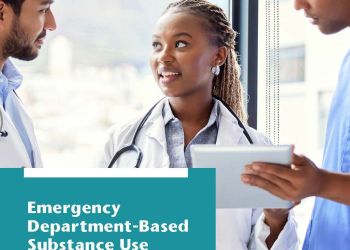The CDC Vital Signs series addresses a single important public health topic each month. This month’s release presents findings on naloxone prescribing in the United States from 2012 to 2018 and county-level naloxone dispensing in 2018. Naloxone is a life-saving medication that can reverse the effects of an opioid overdose.
Key findings of the report:
- The number of naloxone prescriptions dispensed doubled from 2017 to 2018 – going from about 270,000 to 556,000 prescriptions.
- Only one naloxone prescription is dispensed for every 70 high-dose opioid prescriptions, a risk factor for overdose.
- Naloxone prescribing rates were markedly lower among primary care doctors, pain medicine specialists, surgeons, physician assistants, and nurse practitioners. Providers with higher rates of naloxone prescribing per 100 high-dose opioid prescriptions were addiction medicine specialists, psychiatrists, and pediatricians.
- Most (71%) Medicare prescriptions for naloxone required a copay, compared to 42% for commercial insurance.
- Naloxone dispensing is 25 times greater in the highest dispensing counties than the lowest dispensing counties.
- Rural counties were nearly 3 times more likely to be a low dispensing county compared to metropolitan counties.
CDC recommends that healthcare providers consider offering naloxone to all patients at risk for overdose. Some risk factors make patients particularly vulnerable to prescription opioid overdose, including taking high-dose prescription opioids, using benzodiazepines concurrently with opioids, having a history of substance use disorder, misusing prescription opioids, or using illicit drugs (either opioids or potentially contaminated with opioids). HHS guidance and the Surgeon General’s advisory on naloxone reinforce and expand upon the CDC recommendations on when to consider naloxone for overdose prevention.
CDC’s programmatic opioid funding – Overdose Data to Action – provides supports to states and communities to develop and implement innovative and evidence-based strategies to prevent opioid overdose deaths. This includes using data to help target where the need for naloxone might be the greatest. Across the country, overdose protocols are being set up in emergency departments to initiate medication-assisted treatment, make warm hand-offs to treatment services in the community, create connections to harm reduction services, and dispense naloxone. Significant progress has been made, but there are many opportunities to help improve naloxone prescribing and dispensing.


